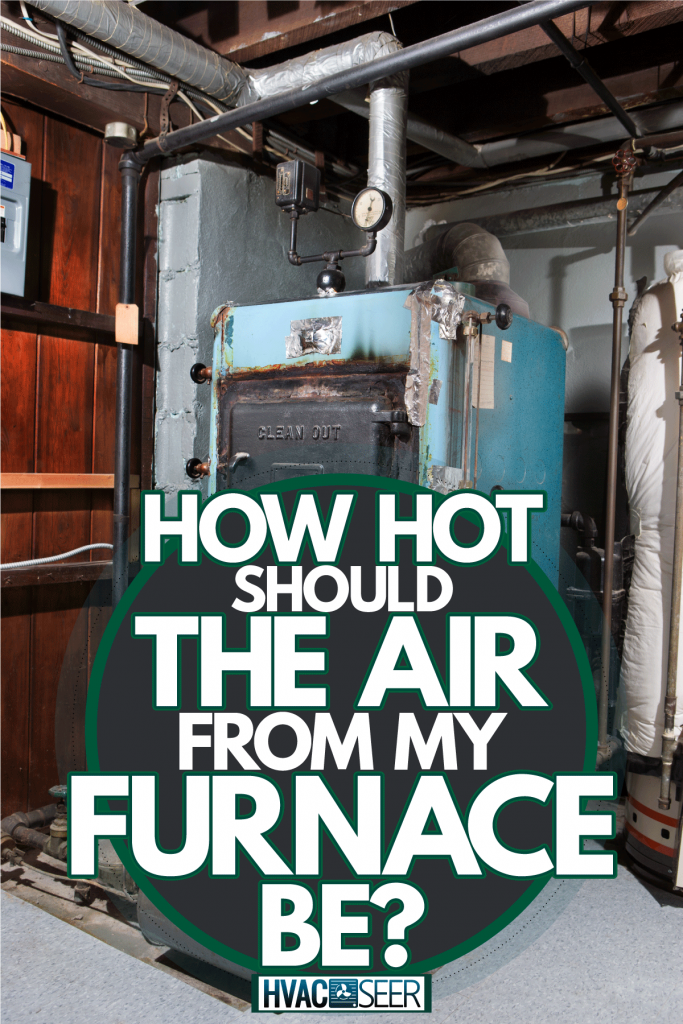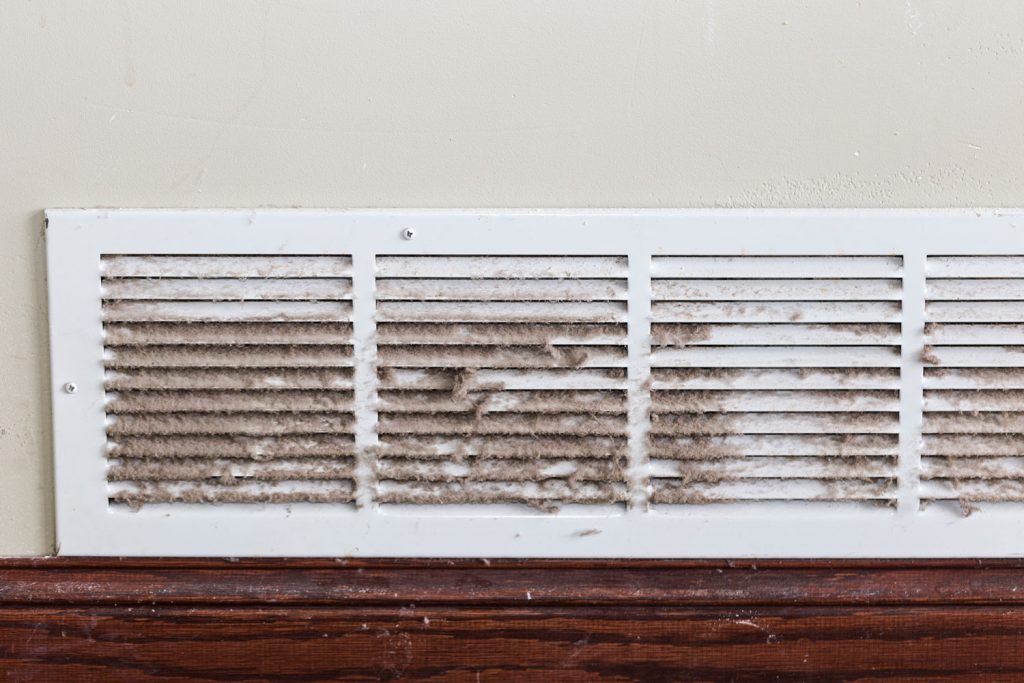Whether you are cooling or warming your home, sometimes the air temperature that comes out of the vent may be inadequate. It may either be too cool or too warm. Why does this happen? How can you find out the right temperature, and what are the solutions? We have done the research to provide you with the answers.
The air that flows out of your vent should be 16 to 22 degrees Fahrenheit cooler than the air that flows back into it. The method commonly used to measure the air temperature coming out of your vent is known as 'Delta T'. It is a straightforward process, and the steps include:
- Check the temperature of your HVAC return vent.
- Check the temperature of the HVAC supply vent.
- Subtract the temperature of the return from that of the supply.
To condition your home adequately, you need to ensure your HVAC system is producing the right air temperature. Continue reading to find out the reasons for the incorrect temperatures , the solutions to this problem, and much more.

How To Know The Right Air Temperature Coming Out Of Your Vent Using The 'Delta T' Formula
This is a technique that will give you the different air temperatures coming out of your supply vent and going back to your return vent.
So, during summer, your supply vent should produce 16 to 22 degrees Fahrenheit cooler than the temperature of the air going back to the vent. When heating, similar readings should apply, meaning the air should be 16 to 22 degrees Fahrenheit warmer than the air returning to the vent.
For example, if during winter, you set your thermostat at 77 degrees Fahrenheit, then your vent should produce air between 93 and 99 degrees Fahrenheit. In contrast, if you have set your thermostat at 77 degrees Fahrenheit during summer, then the temperature produced by your vent should be between 55 and 61 degrees Fahrenheit.
Below are simple steps on how to use the 'Delta T method' to measure the difference in air temperature from your vents:
Check the temperature of your HVAC return vent
Let your AC run for a minimum of 15 minutes, and then place your thermometer at the vent and leave it there for five minutes.
If the vents are more than one, take the temperature of each, add them up and then divide by the number of vents to get the average temperature.
Check the temperature of the HVAC supply vent
Follow the same procedure as you did with the return vent to get the correct air temperature of the supply vent. If there is more than one, add all the temperatures of each vent and divide by all the vents, and then record your result.
Subtract the temperature of the return from that of the supply
Finally, subtract the temperature reading from your return vent from the reading on your supply vent. You should be able to conclude that the air coming out is 16 to 22 degrees Fahrenheit cooler than the air blowing in.
If you do not get this outcome, then it is a sign there could be a problem with your vents.
Why Is My Furnace Blowing Lukewarm Air?
There are several reasons why your vent could be blowing lukewarm air instead of warm air during winter. Equally, if your vent does not produce the right cool air, then there is indeed a problem.
Let us look at the possible causes of your vent not functioning up to par.
Blocked Or Closed Vent
Vents have grates, which if closed will not allow the free flow of air in and out of it. The vent could also get blocked by other objects, for example, furniture such as a bed or sofa being placed right next to it.
To solve this issue, open the vents if they are closed, and remove any obstruction blocking it.
Closed Damper Valve
Dampers regulate the flow of air in your conditioning system. They can be controlled to direct airflow to certain areas or shut it to block out airflow.
If your damper is automated, the problem could be that it is stuck and not positioned wrongly. In manually controlled dampers, they may have accidentally been closed.
Have a look at this motorized airflow damper on Amazon.
For a manual damper, locate it inside the vent and check its position, and open it if you find it closed.
It will be more difficult to know what is causing the blockage in an automated damper, because it is more of an electrical issue. It may be a good idea to call an HVAC specialist to correct the problem.
Blocked Or Dirty Ducts
Air filters prevent dirt and dust from entering your HVAC system. However, dirt can accumulate in the ducts interfering with the airflow. Furthermore insects and small critters love to build homes in these ducts, making the situation worse.
This is best solved by cleaning it, though it is advisable to call in the professionals to do the job for you. This is because you may do more harm than good, while the experts have the know-how on cleaning it well without damaging it.
Leaking Ducts
For your conditioning system to work properly, it should be sealed completely, only leaving the entrance and exits, which primarily are the returns and vents.
When your vents have holes or gaps, they end up leaking air and losing pressure, preventing the free flow of air through the system.
You can choose to fix this problem by taping any small openings you find, or call a professional, especially if the ducts are damaged and need to be replaced.
Material Used To Manufacture The Duct
Ducts made from metal do not bend easily, while if it is made from flexible plastic, it is more prone to damage.
These types of ducts bend more easily than metal, leading to them being out of place and causing restriction of airflow.
You can solve this issue by trying to revert it into place so that it starts working like before. If it needs to be replaced, then a professional will do an awesome job for you.
Restricted Air Filters
When air is sucked into the vent, it first goes through a filter in which dirt, dust, and allergens, are blocked from passing through.
These filters come with different ratings, whereby some are finer than others, thus filtering out more than the coarse filters.
Dirt and dust get clogged much faster in finer filters than the coarse filters, leading to blockage. Subsequently, not enough air will pass through, causing your HVAC system to work harder. The result is incorrect air temperatures coming out of the vent.
How Do You Tell If Your Furnace Is Venting Properly?
There are signs that show that your vent is not working properly and if they are absent, it means it is in good working condition.
The following are ways to know if your cooling and heating system is working properly:
Low-Level Noise
If your HVAC is producing normal low-level noise, then it is working properly. However, if you hear a buzzing or rattling sound, it could signal a loose part. Also, if you hear a grinding or whistling sound, it could mean a more serious issue that needs to be checked.
Non-existence Of Bad Odors
Normally, bad odors coming from your vent means there is an underlying issue that needs to be diagnosed. And, if there is no particular issue with your vent, the bad odor can be eliminated by placing an ultraviolet lamp in the system.
The UV lamps also help to eliminate any microbial growth in your AC.
Check this HVAC UV Light Sanitizer on Amazon.
Moderate Humid Levels
If the humidity levels in your home are moderate, then your AC is functioning well. However, if your home gets uncomfortable during the summer and spring due to high humidity, then your AC is most likely faulty.
Lack of Leaks
The absence of leaks is a good sign that your AC is working well. But, if you notice leaks, then you need to call in a professional to check it out.
Frequent Cycles
The air conditioner goes through the normal cooling cycles, despite the weather. However, if it turns on and off more times than it should, then let the experts have a look at it.
How Hot Does The Inside Of A Furnace Get?
When you turn on your AC system, the heating elements are ignited. The blower fan then blows the hot air produced into the ductwork distributing the heated air into the vents in your home.
The initial combustion that happens produces air that is at a temperature of between 140 and 170 degrees Fahrenheit.
This is immensely hot and can be dangerous to anyone who gets too close to the AC. But, as the air gets dispersed into your home it begins to cool down.
Can Insulation Touch A Furnace Vent?
No, insulation should not touch the vent in your furnace. Instead, use a high-temperature caulking. Also, ensure there is an insulation dam between the insulation and exhaust pipe.
In Closing
When your vent is working properly, you are assured of a warm home during winter, and cool temperatures during summer.
It is important to know the signs that show your HVAC is not working properly so that you may have it repaired to prevent long-term damage.
Check out our previous posts on what do when your furnace starts blowing cold air, and find out if your furnace needs yearly maintenance:



